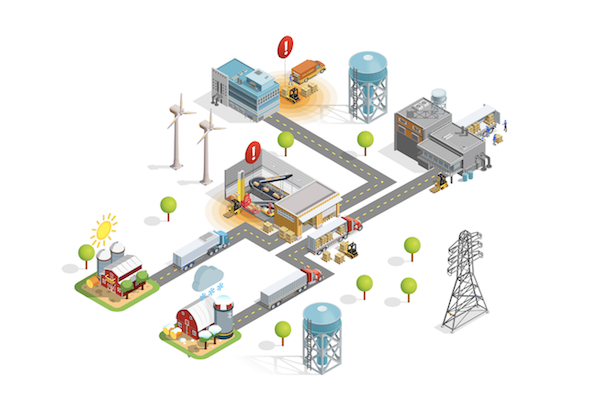
A long time ago, in what feels like a world far, far away, pizza restaurants promised to deliver their pies to customers within 30 minutes or they were on the house. By the 28th, 29th minute, the suspense was unbearable. Will they show up on time, or am is dinner free tonight? In 1994, FedEx launched the first online package tracking. Now recipients are ready to revolt when their Instant Pot hasn’t been delivered promptly, knowing it reached the distribution center just late last night. Sensing an opportunity, Dominoes introduced its Pizza Tracker in 2008. It was quite the novelty to be able to follow the progress of an order from the time the “Place Order” button was clicked to the delivery driver knocking on the door. DoorDash took the concept a step further in 2013 with more granular tracking of food orders: from order confirmation, Dasher at the restaurant, to delivery on the way, complete with real-time GPS tracking. With this kind of tracking and accountability becoming the norm at the consumer level, surely we can not only match but far exceed these standards in the supply chain, particularly considering there is often tens of millions of dollar on the line. Yes, we can.
Just Collecting Data Is Not Enough
Traditionally, manufacturing plant operators spend most of their time and effort optimizing equipment efficiency. The focus is often on uptime, performance, availability, and effectiveness. All valid concerns, but even if the pizza slicer is in pristine condition and available at a moment’s notice to divvy up the pie, it won’t be of any use if you’ve run out of green bell peppers and mushrooms when your customer ordered the supreme. It all figures into a holistic operation: you still need your equipment to be available and running efficiently, but you can’t lose sight of the forest for the trees.
The proliferation of the industrial Internet of things (IIoT) and advances in sensor technology allow us to widen our view of said forest. The tools we now have at our disposal provide an unprecedented ability to supervise development cycles, monitor inventories, and manage warehouses. These advances have led Forrester to predict a refortification of supply chains in 2021 and 2022 due to manufacturers pooling their data, making investments in logistics operation centers, and lending their confidence to a growing number of supplier trust networks. Seeing how fragile the supply chain was against a disruption the size and scope of COVID-19 highlights the importance that manufacturers stay as flexible as possible when circumstances demand it. The more they can control beyond equipment uptime — materials traceability in particular — the better off they’ll be during the next unforeseen event. Forrester, in fact, predicts 20 percent of businesses will replace their disaster-recovery plan with a resilience strategy in 2021.
The Importance Of Tracking And Tracing Material Flow
How do you devise a sound resilience strategy? Equipment efficiency is a start. But establishing a fact-based, granular, data-centric view of material flows plays just as big a role. These optics provide actionable insights into raw materials, quality attributes, movement, and the equipment involved in creating the final product. When these insights are correlated against quality and yield, manufacturers find levers to pull that result in gains in quality, machine efficiency, production, and waste.
Further, material flow analytics can prove the provenance of foods, for instance. Now the chronology of ownership, custody, or location of a product is trackable and the amount of waste can be assessed. Such tracking becomes critical in the event of an outbreak of foodborne illnesses, or reacting to product originating from a country known to inflict human rights abuses to on-field workers.
Widening our scope from mostly equipment-based tracking to greater insight in material flows roots manufacturing efficiencies in reality. Much like the leap from “trust us, your pizza will be there in 30 minutes” to viewing the entire journey from “Ordered” to “Delivered,” it is a natural evolution that these times demand. The need and capability for material traceability is no longer pie-in-the-sky science-fiction. Thanks to the pandemic, it’s more critical than ever to implement processes that improve yield, quality, safety, and compliance, while reducing waste and environmental impact. We have achieved a quantum leap in smart manufacturing out of necessity, and we will be better for it in the coming post-COVID-19 world.Contact us today to learn more about how this transformational technology can help with yoour material traceability.

